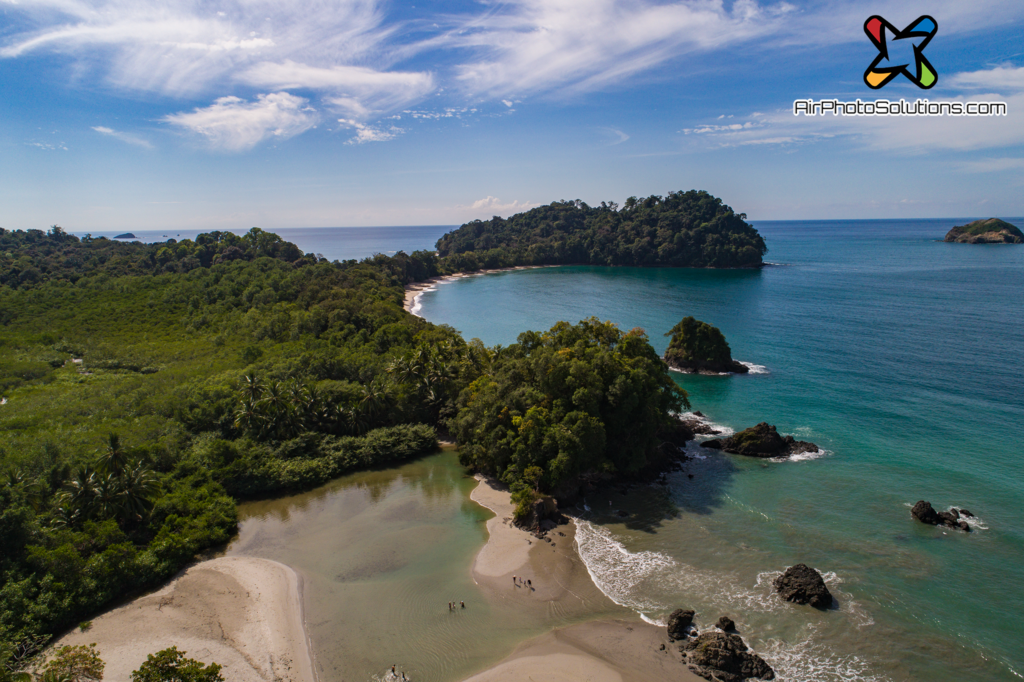
General information
Manuel Antonio National Park is located on the Pacific coast of Costa Rica, in the province of Puntarenas, 157 km (98 miles) south of San Jose by highway and 7 km (4.5 miles) south of the town of Quepos. The park was established on November 15, 1972. Its area encompasses 687 hectares (1,700 acres) of land mass and 55,000 hectares (135,905 acres) of marine reserve.
The Quepos Indians from which the name of the town of Quepos comes once inhabited this region. With the arrival of the Europeans, the region was turned into a cultivated cropland that was later purchased by the United Fruit Company. Foreigners who prohibited the local people’s entry acquired the area that makes up the park today. This precipitated the formation of a pro-national park committee that convinced the municipal and national authorities to declare this area a national park.
Location
Manuel Antonio National Park is a small biological oasis weighted down by the pressure of many and conflicting local enterprises such as: agriculture, livestock and a highly developed tourism. This national park contains some of the most beautiful scenery in the country.
This humid tropical forest is home to many endangered species of flora and fauna. Once, much of this area was logged using a system called selective extraction to cut high quality lumber without clearcutting. Now, these areas are undergoing the forest regeneration process.
Flora and fauna
Manuel Antonio National Park is located in a Humid Tropical Forest life zone. It protects primary and secondary forests, mangroves, beach vegetation and marine resources. The most characteristic species of flora in the primary forest are the Luehea seemanii, bully tree, cedar, Terminalia oblonga, black locust an endangered tree, cow tree, Alibertia edulis, Rain tree, and silk cotton tree.
A mangrove swamp that covers 18 hectares (44.5 acres) is made up of three species: red mangrove, buttonwood mangrove and white mangrove. The beach vegetation consists mainly of Hippomane mancinella, which produces a milky extract, latex and poisonous berries, the almond, mayflower and coconut.
Within the wildlife, some of the most common but amazing species are the raccoon, white-nosed coaties, agouties, the two-toed sloth, white-faced capuchin monkeys and squirrel monkeys (a subspecies of the park, which is an endangered species due to the destruction of its habitat and its exploitation as a pet). In this area you can also observe birds such as the Emerald Toucan, Brown Pelican, Laughing Falcon, Black-collared Hawk, Green Kingfisher and the Northern Jacana. Iguanas, snakes and thousands of insects also abound.
Climate
The park is located in a region of high precipitation and temperature. The average annual rainfall is 3.875 mm (151 inches). The dry period is from January through March while the rainiest months are August through October The average annual temperature is 27°C with a minimum of 20ºC.
Outstanding sights
In addition to the flora and fauna, one of the main features of Manuel Antonio National Park is the overwhelming beauty of the following attractions:
- Espadilla Sur Beach: Extends between the park’s northern limit and Catedral Point. It has a long wide beach during low tide, great for strolling or sunbathing. And though surfing can be quite strong, it poses no real threat to swimmers.
- Escondida Beach: Is a small beach that can be found south of the administration buildings. Because it is required to wade through some areas bounded by steep cliffs, beach accessibility depends on tides. Please inquire at the park office about when you should enter.
- Catedral Point: Is an interesting geological phenomenon. It once was an island, and with the accumulation of sediments, over the time, it joined the continental landmass forming a sandy strip known as tombolo. The interior boasts primary and secondary-growth vest and excellent lookout points from which to view the various elands off the coast, Blanca Beach (White Beach), and the exquisite turquoise sea.
- Quepos town is a place where you can find restaurants, discotheques and all services (bank, drug store, etc).
Related Information:
